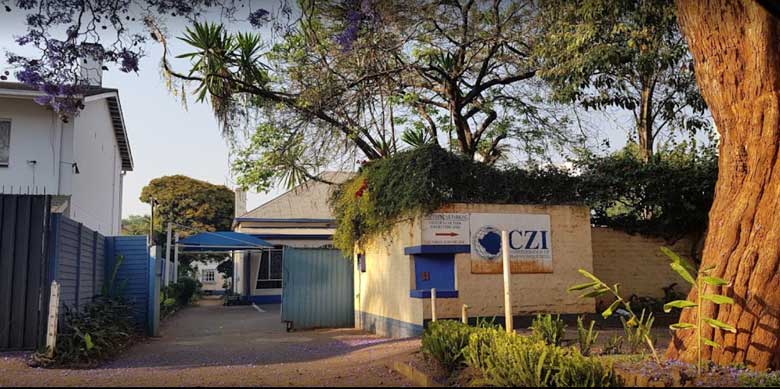
ZIMBABWE has operated in negative trade deficit of US$6,8 billion for the last four years, a trend which is unsustainable in the long run according to Buy Zimbabwe, a campaign outfit that advocates for the consumption of domestic products.
A trade deficit is a situation in which a country imports goods worth more than the value of the goods that it exports.
Statistics from the Zimbabwe National Statistics Agency indicate that from 2020 to 2023, Zimbabwe exported goods worth US$24,2 billion against imports of US$31 billion, creating a trade deficit of US$6,8 billion.
While exports have increased from US$4,3 billion to US$7,2 billion during the period, imports shot up from US$5,6 billion to US$9,2 billion.
“This trend is unsustainable in the long run and requires Zimbabwe to redouble efforts to ramp up local production in order to attain national development,” Buy Zimbabwe said in its 2023 annual report.
Buy Zimbabwe chairman Munyaradzi Hwengwere said closer examination of the statistics will indicate that while exports continued to grow, appetite for imports is outstripping the positive export growth.
“In addition, most exports are of unbeneficiated primary products while imports are value added goods, especially petroleum products,” he said.
The chairman said the government has embarked on the National Development Strategy 1 (NDS1) whose goal is to attain upper middle income status under vision 2030, anchored on industrialisation, mechanisation and modernisation.
- In-depth Interview: 'Local tourism on great rebound'
- Govt challenges youths to participate in tourism
- New perspectives: Moderating parallel market exchange rates
- ZITF Company launches AfriConfex
Keep Reading
“Concerted efforts by government, business and labour are required for Zimbabwe to attain her ambitious goals,” Hwengwere said.
“The positive GDP [gross domestic product] growth of the past years demonstrates that the country has the ability to reverse years of economic stagnation.
“The growth in uptake of Made in Zimbabwe products to an average of 65% in most formal retail outlets from an average of below 30% in 2010 further shows the willingness by both consumers and producers to produce and buy local.”
He added: “Zimbabwe, in our view needs concerted efforts to address constraints in areas where imports remain high.
“Additionally, we need to accelerate programmes that reward companies with high local content while disincentivising the appetite for imports, especially in areas where we have capacity to produce locally.”
Buy Zimbabwe general manager Alois Burutsa said with the coming on board of the African Free Continental Trade Area (AfCTA), which is estimated to have a combined GDP of US$2 trillion, it is important for Zimbabwe to enhance her local productive capacity.
“AFCTA has set stringent local content conditions. Without a robust buy local initiative with set local content thresholds the opportunities in Africa will be missed,” he said.
“Even then, our public and private sector must commit to a minimum quota of local purchases.
“Not doing so will continue to limit our growth and impact negatively on the recovery of our economy.”
Burutsa added: “As the Buy Zimbabwe secretariat we have set an ambitious target to accelerate the buy local initiatives.”
He said for the year 2024, their programmes are anchored on four pillars namely, accelerated engagement with the public sector to ensure that local content requirements are enforced, 80% top of mind awareness, development of local database to track domestic producers and link them to markets
He said they will implement local content rating programmes in partnership with the Standards Association of Zimbabwe and Quality Management Institute of Zimbabwe.
According to Buy Zimbabwe, it is estimated that between 10% to 15% of Zimbabwe’s GDP goes through public procurement, hence enhancing multiplier effects in this sector is critical for growth.
“Presently, the law in Zimbabwe gives preference to domestic suppliers.
“However, the lack of local content thresholds has left the exercise amenable to imports,” the lobby said.
“We are glad that the government through the Procurement Regulatory Authority of Zimbabwe is mindful of this gap and has committed to its redress.
“We are working to ensure that this is expeditiously addressed.”
The organisation noted that the battle to win the minds of Zimbabweans in favour of buying local products can only be won if it actively promote local products.
“To that effect, we will embark on campaigns every month where we partner local outlets, companies and organisations such as CZI [Confederation of Zimbabwe Industries], universities, schools and the Ministry of Industry and Commerce to promote certified local products, which carry the Buy Zimbabwe insignia,” the report reads in part.
In November every year, the institution has a dedicated Buy Zimbabwe week campaign where its ambassadors visit retail and wholesale outlets to educate consumers on identifying local products and emphasising the importance of buying locally produced goods and services.
Buy Zimbabwe said its vision is to build an electronic database that has all companies in Zimbabwe. These can then be alerted to business opportunities in both public and private sectors.










